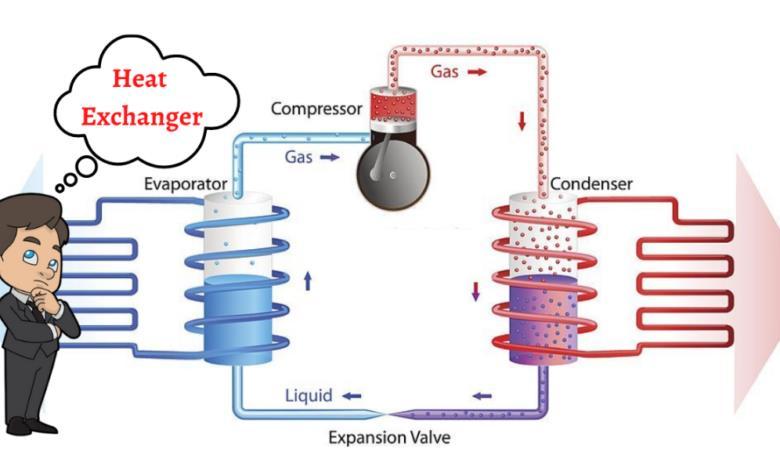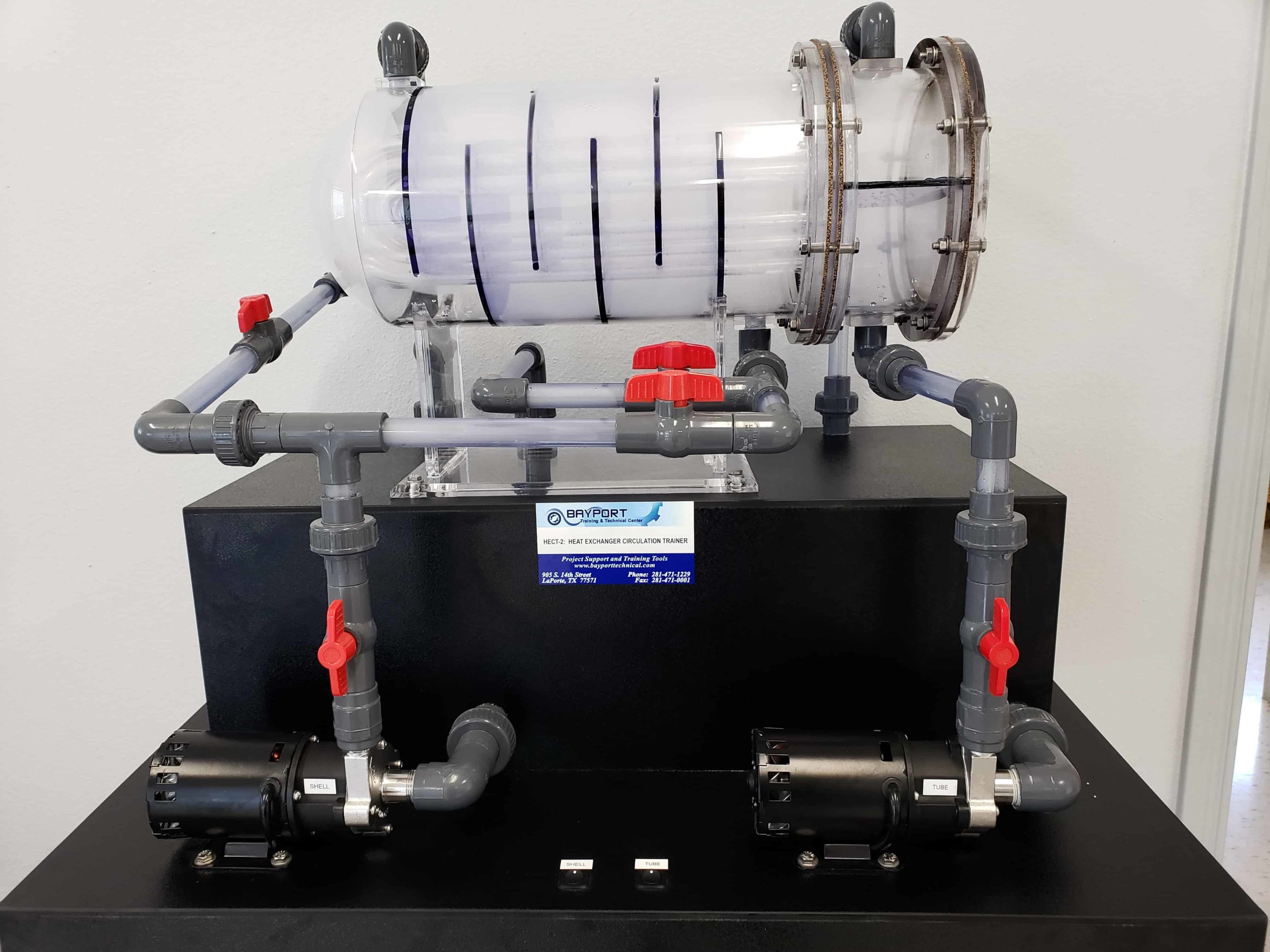Behind the Scenes of Advanced CFD Modeling in DVS Heat Transfer Systems
A Comprehensive Guide to Choosing the Right Heat Transfer Solutions for Your Needs
Selecting the ideal Heat transfer system is crucial for functional efficiency. Numerous systems deal with various demands, influenced by elements such as temperature level range and liquid type. Understanding the concepts behind Heat transfer, such as convection, transmission, and radiation, is important. Furthermore, evaluating power resources and maintenance techniques can affect lasting performance. A closer evaluation of these considerations reveals exactly how to tailor a system to specific needs. What should one prioritize in this complicated decision-making procedure?
Comprehending Heat Transfer: Key Ideas and Principles
Although Heat transfer might feel like a simple concept, it incorporates a variety of concepts that are basic for effective system layout. Understanding these concepts is necessary for designers and designers that aim to optimize thermal performance in different applications. Conduction, as an example, entails the transfer of Heat through strong products, while convection describes the activity of Heat within liquids. Radiation, one more crucial concept, defines just how Heat can be transferred with electromagnetic waves. Each of these mechanisms plays a crucial function in figuring out just how power moves within a system. By completely comprehending these principles, professionals can make enlightened choices, making sure that Heat transfer systems run successfully and satisfy the particular needs of their applications
Kinds Of Heat Transfer Solutions: A Summary
Comprehending the concepts of Heat transfer prepares for discovering the numerous sorts of Heat transfer systems available. Heat transfer systems can be classified mostly right into three kinds: convection, radiation, and conduction. Transmission involves Heat transfer through solid products, depending on straight call between particles. Convection, on the various other hand, occurs in liquids (liquids and gases) where the activity of the fluid itself promotes Heat transfer. Radiation includes the transfer of Heat through electromagnetic waves and does not require a tool, allowing it to happen in a vacuum. Each type of system has distinctive attributes and applications, making it important for people and companies to very carefully evaluate their details needs when picking the most ideal Heat transfer solution.
Applications of Heat Transfer Systems in Different Industries
Heat transfer systems play a vital function throughout different sectors, impacting effectiveness and item quality. In industrial manufacturing procedures, they help with specific temperature control, while in food and drink handling, they ensure safety and preservation. In addition, heating and cooling and environment control systems depend greatly on reliable Heat transfer to keep comfy atmospheres.
Industrial Manufacturing Processes

Numerous industrial manufacturing processes depend greatly on reliable Heat transfer systems to optimize productivity and enhance product quality. In markets such as metalworking, Heat exchangers play an essential function in preserving perfect temperature levels throughout welding, spreading, and building. These systems assure uniform Heat distribution, which is important for accomplishing wanted material homes. In the chemical production market, Heat transfer systems assist in exact temperature level control throughout reactions, impacting yield and security. In addition, in fabric manufacturing, effective Heat monitoring is essential for coloring and completing processes, influencing color uniformity and textile top quality. By picking proper Heat transfer technologies, manufacturers can enhance energy efficiency and decrease operational costs, inevitably causing a more affordable and sustainable manufacturing atmosphere.
Food and Beverage Handling
Efficient Heat transfer systems are equally important in the food and drink processing market, where preserving optimal temperatures is essential for food security and top quality. These systems play a necessary duty in procedures such as food preparation, pasteurization, and sterilization, ensuring that items are safe for usage and keep their dietary value. Heat exchangers, for instance, efficiently transfer Heat between fluids, maximizing energy use while lessening temperature level fluctuations. Additionally, refrigeration systems are fundamental for expanding and preserving subject to spoiling things shelf life. The selection of Heat transfer modern technology directly impacts operational effectiveness and product honesty, making it important for food and drink suppliers to choose the suitable systems tailored to their details processing needs. This mindful option eventually adds to consumer contentment and food security.

HVAC and Climate Control
While several sectors count on Heat transfer systems for performance, HEATING AND COOLING (Heating, Ventilation, and Air Conditioning) plays a crucial role in keeping indoor environment control throughout numerous setups. These systems utilize Heat transfer concepts to control temperature, air, and moisture top quality, making certain convenience and security in domestic, business, and commercial atmospheres. Correctly created HVAC systems enhance power performance, decrease functional expenses, and lessen environmental impact. In industrial go to these guys structures, for instance, reliable climate control contributes to employee productivity and consumer complete satisfaction. In industrial applications, cooling and heating systems assist keep perfect problems for tools procedure and item preservation. Selecting the best Heat transfer system is important for meeting particular climate control requirements and achieving overall system performance.
Assessing Energy Sources for Heat Transfer Systems
In reviewing power sources for Heat transfer systems, a contrast of eco-friendly energy alternatives and nonrenewable fuel source considerations is necessary. Eco-friendly sources, such as solar and wind, deal lasting options that can reduce ecological influence. On the other hand, fossil fuels remain widespread as a result of their well established facilities and energy density, triggering a careful analysis of both options.
Renewable Resource Options

Nonrenewable Fuel Source Considerations
Reviewing fossil gas factors to consider is essential for the efficiency and sustainability of Heat transfer systems. Fossil fuels, such as gas, oil, and coal, are conventional energy sources that give considerable Heat output, making them preferred selections for property and commercial applications. Nonetheless, their environmental influence, including greenhouse gas discharges and source exhaustion, increases concerns. When selecting a warmth transfer system, it is vital to evaluate the availability, cost, and regulatory aspects connected with these fuels. In addition, the effectiveness of fossil gas systems have to be thought about, as higher effectiveness can minimize some environmental drawbacks. Eventually, a well balanced technique considering efficiency and sustainability can guide decision-makers toward the most ideal Heat transfer option for their certain demands.
Variables to Consider When Picking a Warmth Transfer System
Picking an ideal Heat transfer system calls for careful consideration of various elements that can substantially affect performance and performance. One vital factor is the operating temperature level range, which dictates the products and layout ideal for the application. In addition, the kind of liquid utilized in the system-- whether gas or liquid-- affects Heat transfer efficiency and compatibility. The system's size and ability have to straighten with the specific needs of the procedure to stay clear of inefficiencies. Energy resource schedule is additionally important, affecting operating prices and sustainability. The installation setting, consisting of area restraints and access for upkeep, plays a significant duty in system choice. Regulative compliance and safety and security requirements need to be considered to assure the system meets all lawful demands.
Maintenance and Effectiveness Optimization for Heat Transfer Solutions
Preserving Heat transfer systems is crucial for making sure optimal performance and longevity. Regular maintenance tasks, such as cleansing Heat exchangers and examining insulation, help protect against efficiency losses because of fouling and thermal linking. Additionally, keeping track of system parameters, including stress and temperature, permits for early detection of abnormalities, minimizing downtime and expensive repair work. Applying a preventive upkeep routine can optimize efficiency and extend the life expectancy of elements. Upgrading to sophisticated control systems can improve functional performance by readjusting to varying lots read here and problems. By prioritizing maintenance and effectiveness optimization, drivers can attain lowered power intake, lower operational expenses, and improved overall system read this article dependability, ultimately causing far better source application and an extra lasting operation.
Future Trends in Heat Transfer Technologies
As markets significantly prioritize sustainability and power efficiency, future trends in Heat transfer innovations are readied to go through considerable changes. Innovations such as sophisticated materials, consisting of carbon nanotubes and nanofluids, promise enhanced thermal conductivity and performance. Additionally, the assimilation of renewable resource sources into Heat transfer systems is acquiring energy, advertising eco-friendly services. Smart innovations, including IoT sensing units, are anticipated to reinvent monitoring and control, making it possible for real-time information analysis for maximized efficiency. Furthermore, the advancement of compact and modular systems will facilitate easier setup and maintenance, providing to varied applications. These developments show a shift in the direction of even more lasting, reliable, and versatile Heat transfer options, lining up with global energy objectives and environmental standards.
Frequently Asked Questions
What Are the Ecological Effects of Heat Transfer Equipments?
The environmental influences of Heat transfer systems can consist of greenhouse gas exhausts, power usage, and possible thermal pollution. In addition, incorrect disposal of inefficiencies and products can add to source depletion and ecosystem disruption.
Exactly how Do I Compute the Cost-Effectiveness of a Warmth Transfer System?
To calculate the cost-effectiveness of a warmth transfer system, one have to evaluate preliminary prices, operational expenses, maintenance needs, and power efficiency, comparing these aspects against the anticipated lifespan and performance of the system.
Can Heat Transfer Systems Be Utilized in Residential Settings?
Heat transfer systems can without a doubt be made use of in residential settings. They supply reliable home heating and cooling down remedies, making homes more comfortable while possibly reducing power costs. Their adaptability permits for different applications in domestic atmospheres.
What Safety Regulations Put On Heat Transfer Solutions?
Security policies for Heat transfer systems commonly include guidelines on installation, operation, and upkeep. Conformity with neighborhood building regulations, manufacturer requirements, and market standards is important to assure effective and secure system efficiency in numerous applications.
Exactly How Do Different Products Affect Heat Transfer Effectiveness?

Transmission, for circumstances, entails the transfer of Heat through solid materials, while convection refers to the motion of Heat within fluids. Understanding the principles of Heat transfer lays the groundwork for exploring the numerous types of Heat transfer systems offered. Heat exchangers, for instance, efficiently move Heat between liquids, enhancing energy use while reducing temperature changes. In evaluating power resources for Heat transfer systems, a contrast of sustainable energy options and fossil fuel factors to consider is necessary. Metals, such as copper and aluminum, conduct Heat properly, whereas insulators like rubber and glass reduce down Heat circulation.